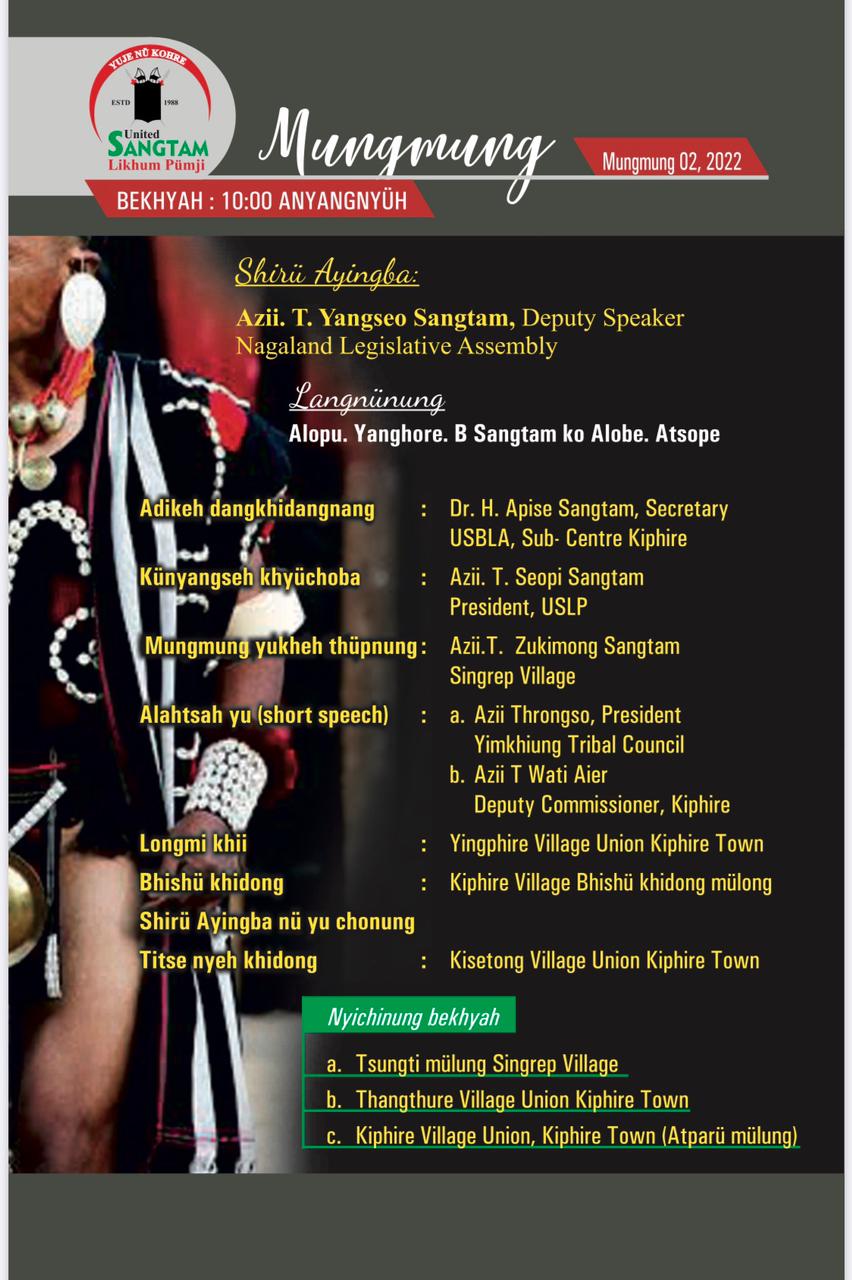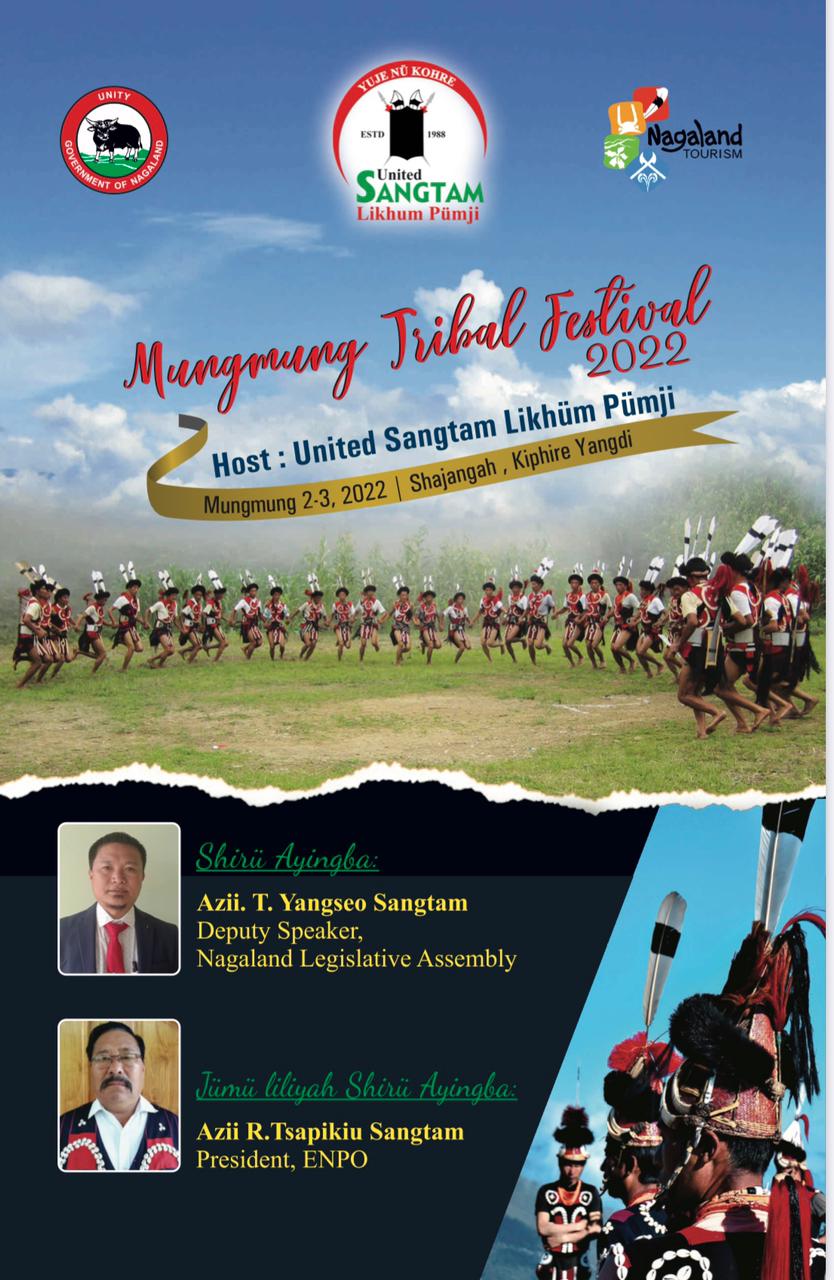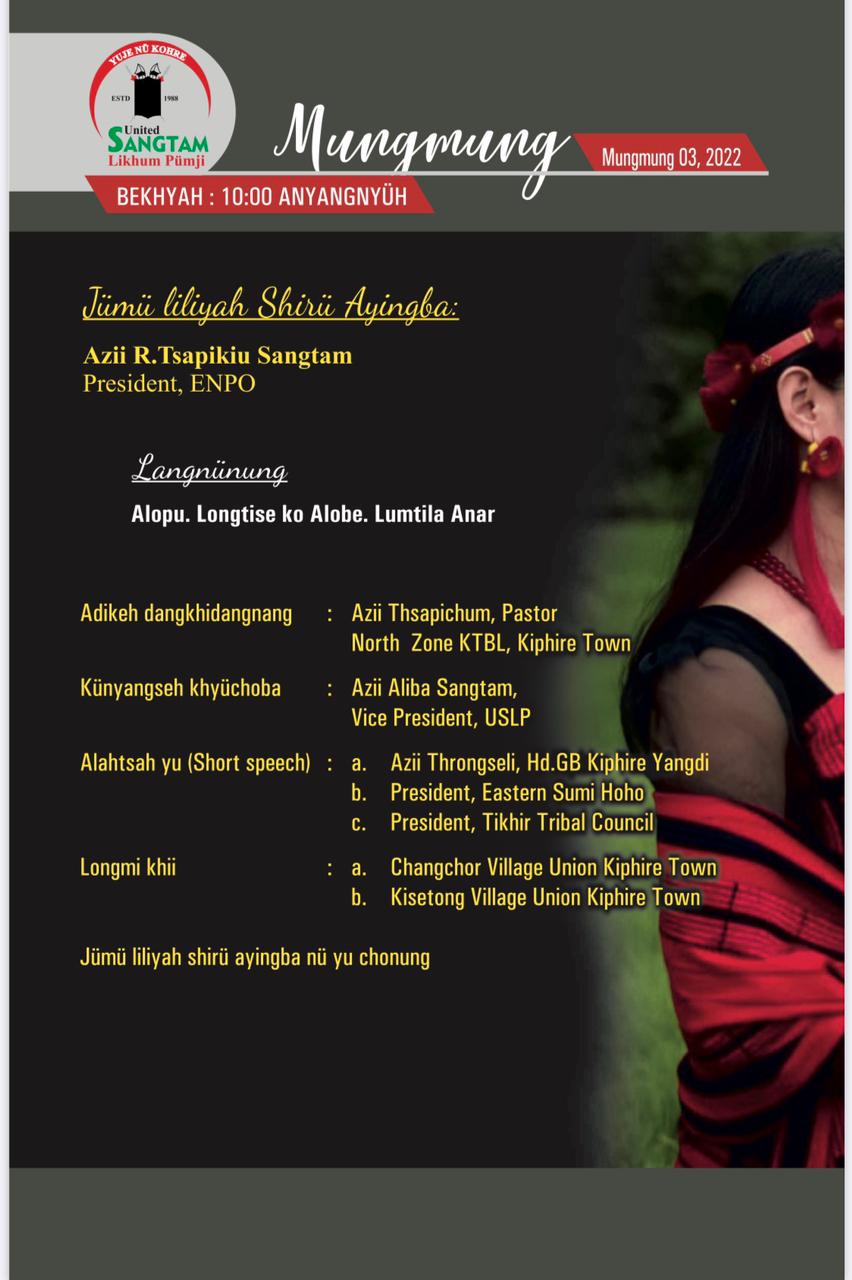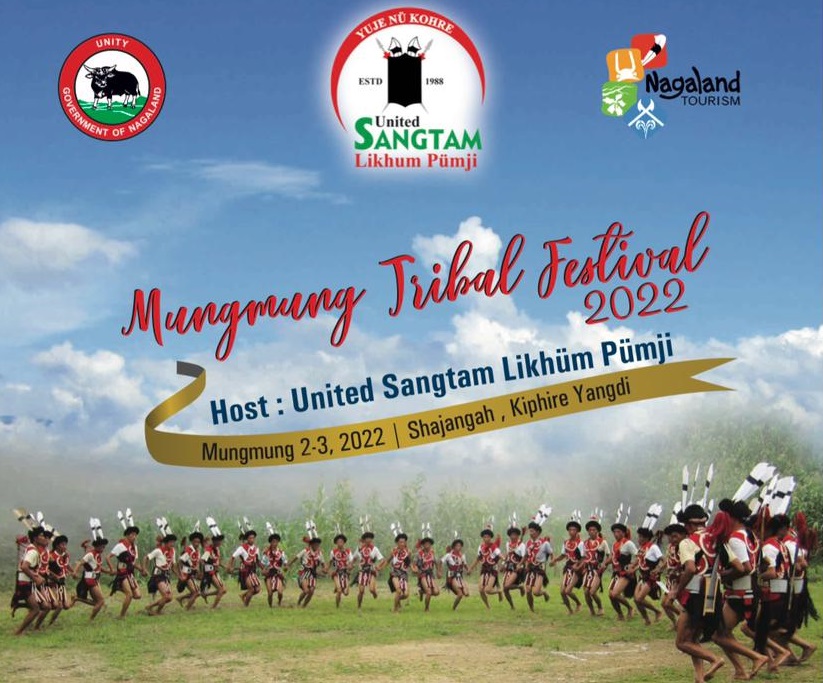1/ 5

2/ 5

3/ 5

4/ 5

5/ 5

❮
❯
Mungmung Festival
The word “Mongmong” meaning “Togetherness Forever” is celebrated for 6 days from the 1st—6th of September every year. Each of these six days holds special significance for the Sangtam community.
The predominant theme of the Mongmong is to hark on the harvest season and invoke upon “LIJABA” the Supreme Being for a bountiful harvest, prosperity, and longevity.....
The word “Mongmong” meaning “Togetherness Forever” is celebrated for 6 days from the 1st—6th of September every year. Each of these six days holds special significance for the Sangtam community.
The predominant theme of the Mongmong is to hark on the harvest season and invoke upon “LIJABA” the Supreme Being for a bountiful harvest, prosperity, and longevity.
The festival commences after the second announcement/ proclamation by the “Bebürü” (a priest from the Anar clan). The first announcement denotes the separation of the spirit of the death from the living and the rituals continue throughout the festival.
With the advent of Christianity, these ancestral beliefs are no longer in practice. As time passes all these traditions are forgotten and slowly fade away. It is only during the Mongmong festival, that the beliefs of these traditions and customs are rekindled to the present generation through folklore.
Read More
Activities
Day-I: on this day villagers kill Pigs, Mithuns etc…, and prepare stocks like firewood, water and other vegetables etc… for the whole festival.
Day-II: on this day it is forbidden for the villagers to fetch water until the eldest woman in the village would take the first scoop of water.
Day-III: a very special pig would be killed, and the eldest woman in the family will perform the ritual of feeding the 3 fire place stones with rice and meat before distribution of meat to the family members as a gesture of mass participation in ritual activities.
Day-IV: Clearing of the foot-path leading to the village pond/ water-well where villagers normally fetch water. A wealthy person of the village would lead the youths for social work. There will be sumptuous feast in one of the elder’s house after the social work. This was also a day for sharing and drinking rice beer and eating special cooked food among the villagers. On this day folk songs, dances and traditional games are performed.
Day-V: the villagers plant tree branches tied with specific items like cotton, chilli etc …along the village junctions, which they believed would ward-off sickness and diseases. This also symbolizes the end of Mongmong festival.
Day-VI: A certain leaf known as “Throngba” (Nettle/a stinging weed) was placed on the walls and roofs of the houses with the belief that it would sting away the evil and diseases.
Social Media
Organized By
Tourism Nagaland
Tourism Nagaland
Opp indoor stadium, Kohima Nagaland
91370224312
nagalandtourism2014[at]gmail[dot]com
How to reach
The nearest airport is Dimapur,
which is 307 KMs away.
The nearest convenient railway station is Dimapur,
which is 312 KMs away.
The nearest major city is Kohima,
which is 243KMs away.
